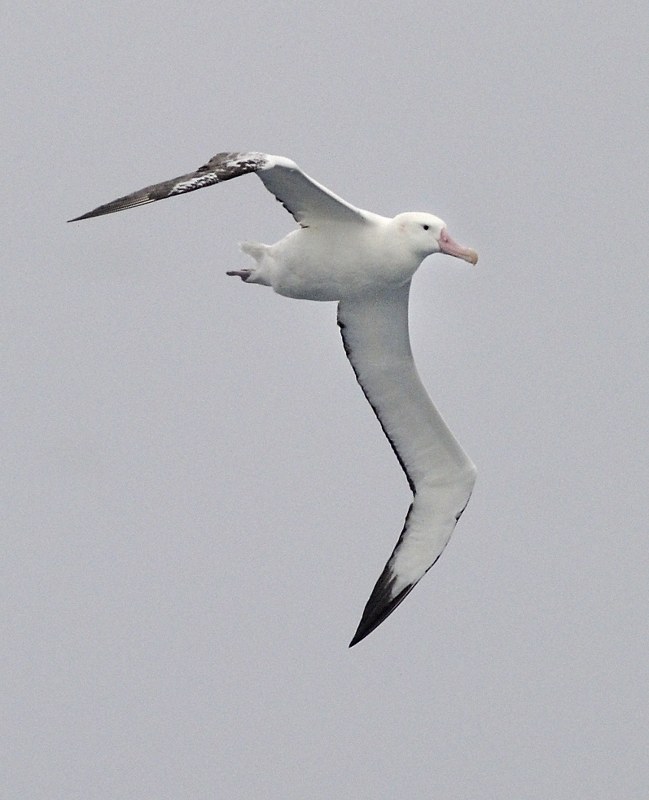
Wandering Albatross at sea, photograph by Kirk Zufelt
Henri Weimerskirch (Centre d’Etudes Biologiques de Chizé, Villiers en Bois, France) and colleagues have published in the journal PNAS (Proceedings of the National Academy of Sciences of the United States of America) on using Wandering Diomedea exulans and Amsterdam D. amsterdamensis albatrosses to identify the presence of fishing vessels.
The paper’s abstract follows
“With threats to nature becoming increasingly prominent, in order for biodiversity levels to persist, there is a critical need to improve implementation of conservation measures. In the oceans, the surveillance of fisheries is complex and inadequate, such that quantifying and locating nondeclared and illegal fisheries is persistently problematic. Given that these activities dramatically impact oceanic ecosystems, through overexploitation of fish stocks and bycatch of threatened species, innovative ways to monitor the oceans are urgently required. Here, we describe a concept of “Ocean Sentinel” using animals equipped with state-of-the-art loggers which monitor fisheries in remote areas. Albatrosses fitted with loggers detecting and locating the presence of vessels and transmitting the information immediately to authorities allowed an estimation of the proportion of nondeclared fishing vessels operating in national and international waters of the Southern Ocean. We found that in international waters, more than one-third of vessels had no Automatic Identification System operating; in national Exclusive Economic Zones (EEZs), this proportion was lower on average, but variable according to EEZ. Ocean Sentinel was also able to provide unpreceded information on the attraction of seabirds to vessels, giving access to crucial information for risk-assessment plans of threatened species. Attraction differed between species, age, and vessel activity. Fishing vessels attracted more birds than other vessels, and juveniles both encountered fewer vessels and showed a lower attraction to vessels than adults. This study shows that the development of technologies offers the potential of implementing conservation policies by using wide-ranging seabirds to patrol oceans.”
Read a popular account of the study (and another here).
Reference:
Weimerskirch, H., Collet, J., Corbeau, A., Pajot, A., Hoarau, F., Marteau, C., Filippi, D. & Patrick, S.C. 2020. Ocean sentinel albatrosses locate illegal vessels and provide the first estimate of the extent of nondeclared Ocean sentinel albatrosses locate illegal vessels and provide the first estimate of the extent of nondeclared fishing. PNAS -Proceedings of the National Academy of Sciences of the United States of America doi.org/10.1073/pnas.1915499117.

 English
English  Français
Français  Español
Español